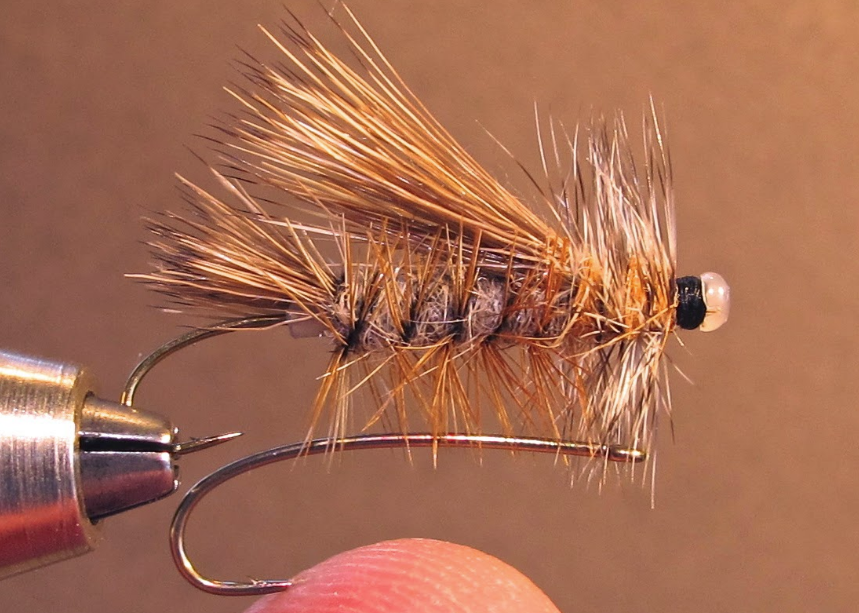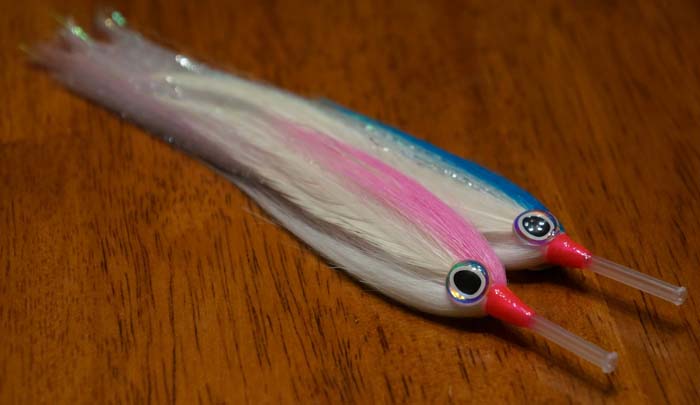By Skip Clement
The number one advantage of tube flies is reason enough to adopt them: they are easier to cast
• There is almost no type or technique in fly fishing where tube tied flies don’t have an advantage over tied to the hook flies. (See Note 1 below)
• Tube flies outlast conventional flies many times over.
• The hook on a tube fly can be repositioned to fish up or down while using it.
• Flies can be kept in small Zip-Lok® bags with sizes and type noted with a Sharpie. You can even keep them loose in your shirt or pant pockets. Keep on the ready because there’s no hook to catch on anything.
• Hooks stay in their packets – carried in any shirt or pant pocket or fanny pack.
• If a hook is bent or the point is damaged you don’t lose a fly; you change the hook.
• A tube fly will almost always breakaway from its hook – ride up the leader when a fish jumps/headshakes. With the fly away from the hook, your landing ratio will improve. The other advantage there is the fly doesn’t get mauled – lives for another day.
• Fish can’t use the weight of the fly itself as leverage on a headshake.

The hook IN the “Stimulator” tube is a #14 Tiemco 2488 – short-shank straight-eye hook. Actual length of this hook is just a hair over 1/4-inch – from front of eye to tip of barb. NOTE: The #10 hook shown naked ( Daiichi Model 1260) is three times as long as the #14 mounted in the tube fly. Image HMH.
Tying notes:
• Use a razor to cut plastic tube lengths- scissors make ragged edges.
• You can burn the front or back of the plastic tube to secure wraps by using a cigarette lighter flame held aside. The plastic will curl up and create a retaining collar.
• Junction tubing is a pain, but not always necessary.
• Metal tubes and “helmuts” are readily available.
• You don’t need a special vise to hold the tube in place. Just buy an adapter. A rotating vise is a real tying advantage.
• When the tube rotates, tighten down screws that secure it or if a flattened pin – shove it on more tightly.
• I use gel-spun thread [#20, #50 or #100, #200 (50 equals the number of thread strains – etc.)] because GSP uses fewer wraps to secure and I can Sharpie color thread to any color, and polka dot or stripe.
• I CA pre-coat the entire thread wrapped tube before beginning to avoid thread slippage.
• Don’t crush tube against the pin by using too much wrapping tension/pressure.

Tube flies were adopted into the big game saltwater playbook decades ago, but remain a foreign language where they’d perform best. The flats and saltwater marshes – think tarpon, bluefish, snook, striper, redfish, and bonefish… and more.
Note 1: For some tyers there can be a limit to tying small tube flies. For me, fly sizes +/- #14 and smaller are better tied directly to the hook. However, much better tube tyers than me disagree.

